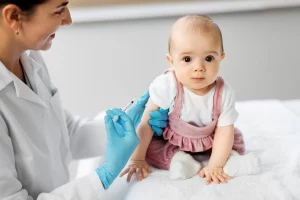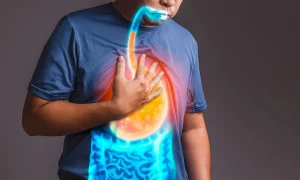You’re feeling pretty darned sick — headache, fever, fatigue, a cough — but your COVID-19 test came back negative.
What do you do now?
Well, chances are good that you don’t have COVID-19 if that’s what the test says, according to experts.
Labs that are testing for COVID-19 rely on what’s called a PCR test, a slow and complex molecular scan that looks for the genetic material of coronavirus in samples that boasts very high accuracy.
A negative result on this test shows there’s probably something other than COVID-19 wrong with you, said Dr. Bobbi Pritt, chair of clinical microbiology with the Mayo Clinic in Rochester, Minn.
“I know I have several work members and family members who had an influenza-like illness earlier in the year, and it probably was just the common flu or it could have been the common cold,” Pritt said.
Sick folks who test negative for COVID-19 should make sure their doctors also run tests for other infectious diseases, said Dr. Amesh Adalja, a senior scholar with the Johns Hopkins Center for Health Security, in Baltimore.
COVID-19 tests becoming more accurate
“In general, the tests available are sensitive enough to diagnose those with symptoms accurately, but there are also other infections with similar symptoms that might merit testing for as well,” Adalja said.
PCR tests have improved dramatically during the pandemic, and have also gotten easier to perform.
For example, labs can now get fairly accurate results from gentle nasal swabs or saliva samples, and no longer have to use a long swab to hook a sample from deep within your nasal cavity, Pritt said.
“We can accept nasal swab specimens and even saliva and perform testing on those specimens, and if they are collected correctly the results can be just as good as those that are collected using that gold standard nasopharyngeal swab,” Pritt said.
Labs also are getting results back to doctors more quickly, although they are still struggling to maintain supplies of the chemical reagents they need to perform PCR tests, said Dr. Emily Volk, senior vice president of clinical services at University of Texas Health in San Antonio.
“Turnaround times are improving as more local laboratories and hospitals have been able to bring up the testing,” Volk said. “The more reagents we have available at the local level, the more we’re going to be able to provide turnarounds within 24 hours or less on even the most accurate PCR testing.”
However, there is a chance that you might have gotten a false negative, experts added. The exact accuracy of PCR tests has been tough to pin down. According to Dr. Robert Schmerling reporting in Harvard Health Publishing, “the reported rate of false negatives is as low as 2% and as high as 37%. The reported rate of false positives — that is, a test that says you have the virus when you actually do not — is 5% or lower.”
The timing of when the sample is collected, the type of sample collected and the quality of the sample can all influence the accuracy of the COVID-19 results, said Matthew Binnicker, director of the Clinical Virology Laboratory at the Mayo Clinic in Rochester, Minn.
Is repeat testing necessary?
“The virus is thought to be present at the highest levels approximately five days, on average, after being exposed, or around the time a person develops symptoms,” Binnicker said. “If a high-quality nasopharyngeal swab is collected within 24 hours of symptom onset, is tested by an approved PCR method and the result is negative, the likelihood of the person having COVID-19 is low,” he explained.
“However, if a less preferred sample (e.g., throat swab) is collected after three to five days of symptoms and tested by PCR, a negative result would be less reliable to rule out COVID-19,” Binnicker continued.
If you’re still sick a week after your negative COVID-19 test and you continue to have no idea what’s wrong with you, experts say you should reach out to your doctor for a follow-up coronavirus test.
“If a COVID-19 test is negative, then specific testing for influenza will also need to be performed,” Binnicker said. “If the results are negative for these viruses and the patient continues to be ill, a repeat COVID-19 test can be appropriate. As patients enter into the second week of illness, a lower respiratory sample (e.g., like sputum) is preferred over an upper respiratory swab to increase the likelihood of detecting SARS-CoV-2 during the later stages of disease.”
Keep in mind that if you’re sick right now, you probably won’t be given an antigen test, the other form of viral testing for COVID-19 infection.
Antigen tests are cheap and fast, looking for specific structural proteins of the coronavirus that form during infection. The Trump administration made headlines last month by buying out the entire 2020 supply of the just-approved $5 BinaxNOW COVID-19 Ag Card produced by Abbott Laboratories, which the company says will return relatively accurate results within 15 minutes.
Because antigen tests are quick but generally less accurate than PCR tests, they probably will be reserved for screening folks who don’t have any symptoms of possible COVID-19 infection, Pritt said.
“If we are screening large numbers of individuals and we plan on doing that on a regular basis, let’s say college students on a weekly basis, then using an antigen test is probably going to be the best strategy forward because it’s going to be relatively inexpensive and easy to do, and it’s going to be done on a relatively lower risk population,” Pritt said.
More information
The U.S. Centers for Disease Control and Prevention has more about testing for COVID-19.
Source: HealthDay
Copyright © 2025 HealthDay. All rights reserved.

















